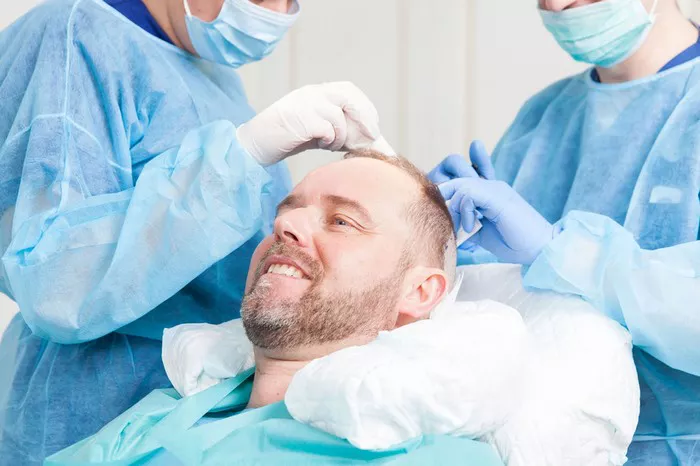Hair transplants have gained immense popularity as a long-term solution for hair loss, promising natural-looking results and a restoration of confidence. However, potential patients often have concerns about the permanence of the results and the pain associated with the procedure. This article aims to address these questions, exploring the nature of hair transplants, the pain involved, and the factors that influence the longevity of the results.
Understanding Hair Transplants
1. What is a Hair Transplant?
A hair transplant is a surgical procedure that involves relocating hair follicles from a donor site—typically the back or sides of the scalp—to areas experiencing thinning or baldness. The two main techniques are:
Follicular Unit Transplantation (FUT): Involves removing a strip of scalp from the donor area and dissecting it into individual follicular units for transplantation.
Follicular Unit Extraction (FUE): Involves extracting individual hair follicles directly from the scalp using specialized tools, leaving minimal scarring.
2. Who is a Good Candidate?
Good candidates for hair transplants generally include individuals experiencing male or female pattern baldness, those with sufficient donor hair, and individuals in good overall health. A thorough consultation with a qualified surgeon is essential for determining candidacy.
The Pain Associated with Hair Transplants
1. Pre-Operative Considerations
Before the procedure, patients typically undergo a consultation where the surgeon discusses the process, addresses any concerns, and may prescribe medication to help minimize anxiety and discomfort.
2. During the Procedure
a. Anesthesia
Most hair transplant procedures are performed under local anesthesia, which numbs the scalp. Patients remain awake but should not experience pain during the surgery. Sedation may also be offered to help patients relax.
b. Discomfort Levels
FUT: Patients may feel some pressure and tugging during the extraction of the strip, but pain should be minimal due to anesthesia.
FUE: This technique typically involves less discomfort, as individual follicles are removed. Patients may feel slight pinching or tugging, but significant pain is rare.
3. Post-Operative Pain
a. Immediate Aftermath
After the procedure, patients may experience some swelling, redness, and discomfort in the donor and recipient areas. The intensity of pain varies among individuals but is usually manageable with over-the-counter pain medications or those prescribed by the surgeon.
b. Managing Discomfort
Pain Medications: Following the surgeon’s guidelines for pain management is crucial.
Ice Packs: Applying ice packs can help reduce swelling and discomfort.
Rest: Adequate rest and avoiding strenuous activities can aid recovery.
4. Long-Term Pain Considerations
Most patients report a significant decrease in discomfort within a few days post-surgery. However, some individuals may experience itching or sensitivity in the transplanted area as the follicles begin to heal and hair growth commences.
Is the Result Permanent?
1. Understanding Hair Growth Cycles
Hair goes through a natural growth cycle consisting of three phases: anagen (growth), catagen (transition), and telogen (resting). After a transplant, newly implanted hair may initially shed before entering the growth phase. This shedding is a normal part of the process, and patients should not be alarmed if they notice hair loss shortly after the procedure.
2. Longevity of Transplanted Hair
Transplanted hair follicles are typically taken from areas of the scalp that are genetically resistant to hair loss. As a result, hair transplanted from these areas is generally permanent. However, there are factors that can influence the longevity of the results:
a. Individual Factors
Genetics: An individual’s genetic predisposition plays a significant role in hair loss. While transplanted hair is permanent, surrounding non-transplanted hair may continue to thin over time.
Age: Younger patients may experience different results compared to older individuals due to varying hair loss patterns.
b. Post-Transplant Care
Proper care and maintenance after a hair transplant can influence the longevity of results. Important considerations include:
Follow-Up Appointments: Regular check-ups with the surgeon can help monitor progress and address any concerns.
Scalp Care: Following post-operative care instructions, such as gentle cleansing and avoiding sun exposure, is essential.
Healthy Lifestyle: A balanced diet, hydration, and avoiding smoking can promote healthy hair growth.
3. Potential for Future Hair Loss
While the transplanted hair is generally permanent, patients should understand that hair loss can continue in non-transplanted areas. Some may opt for additional sessions in the future to maintain their desired appearance.
Addressing Common Concerns
1. Will the Hair Look Natural?
When performed by a skilled surgeon, hair transplants can produce very natural-looking results. Factors that contribute to a natural appearance include:
Graft Placement: Proper placement of grafts at the correct angle and density is crucial.
Hairline Design: A natural hairline design can enhance the overall result.
2. Are There Risks Involved?
As with any surgical procedure, hair transplants come with potential risks, including:
Infection: While rare, infections can occur and may require treatment.
Scarring: Depending on the technique used, scarring can be a concern, though skilled surgeons minimize this risk.
Unsatisfactory Results: Results may vary based on individual factors, and some patients may require additional procedures for desired results.
3. What Are the Costs Involved?
The cost of hair transplants varies based on several factors, including:
Geographical Location: Prices can differ significantly between regions.
Surgeon’s Expertise: More experienced surgeons may charge higher fees.
Number of Grafts: The total cost often correlates with the number of grafts needed.
Conclusion
Hair transplants are a viable option for those seeking a long-term solution to hair loss. While the procedure may involve some discomfort, proper pain management and post-operative care can lead to a smooth recovery. The results are typically permanent, provided that individuals take care of their scalp and maintain a healthy lifestyle. Understanding the intricacies of the procedure and managing expectations can help patients feel confident in their decision to pursue hair restoration. As with any medical procedure, thorough research and consultation with qualified professionals are essential for achieving the best possible outcomes.
Related topics:
- When Can I Drink Alcohol After FUE? A Complete Guide
- When Can You Scratch Your Head After FUE Hair Transplant?
- Why Are Hair Transplants So Expensive? To Get the Truth


